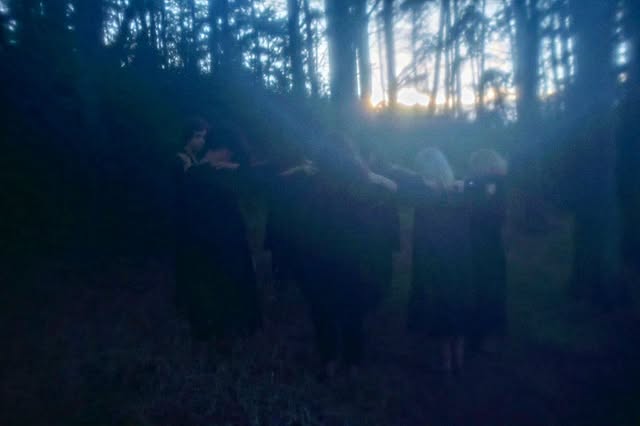EN

We went to meet actress and playwright Teresa Coutinho to find out what led her to write this story that visits the past and warns us of the dangers of the rise of the extreme right and the perpetuation of mechanisms of oppression. Inspired by Christa Wolf's Cassandra and an in-depth investigation into witch-hunting, this play builds a provocative and visceral narrative that invites the audience to reflect on the present and calculate alternative futures.
‘There are many things that are very strong in Christa Wolf's text for me. The idea of Cassandra as someone who sees, who prophesises, but who no one believes in - that resonated with me in a profound way,’ she shares, stressing that the classical myth was the starting point for exploring female intuition and the ways in which women have been systematically discredited throughout history.

Teresa Coutinho © Rui Meireles
In dialogue between the past and the future
Between historical research and authorial creation, Teresa brings to the stage a dictatorship where women, accused of witchcraft, saw their rights brutally restricted. ‘I became very interested in witch-hunting as a historical phenomenon, because I understood how it was used to control women's bodies and ensure that they were at the service of capitalism and the creation of labour.’ Inspired by authors such as Silvia Federici, the playwright analyses how this institutional violence shaped social and medical practices that reverberate to this day.
As well as exploring historical issues, the play also issues a stark warning about the dangers of fear and passivity in times of crisis. ‘The rights we have won are marvellous, but very fragile. You only have to look at the backsliding on abortion rights in the United States to realise that nothing is guaranteed,’ he stresses, emphasising the importance of remaining vigilant.

O Fim Foi Visto © Rui Palma
Art as a space for healing and resistance
For Teresa Coutinho, ‘The End Has Been Seen’ is also a celebration of the encounter, of the collective and of the ability to resist through beauty. ‘Joy is resistance. The show isn't just about pain and tragedy; it also celebrates resilience, the ability to laugh, dance and create even in the most difficult times,’ she says, emphasising that the chorus of 13 actresses on stage reflects a collective strength that transcends the individual.
In this process, the city of Porto, the venue for the play's premiere, occupies a special place. ‘Premiering here is like presenting this to the family. Porto is my home, and there's something very strong and emotional about bringing this work to this audience,’ she says enthusiastically.
Art as a space for healing and resistance
For Teresa Coutinho, ‘The End Has Been Seen’ is also a celebration of the encounter, of the collective and of the ability to resist through beauty. ‘Joy is resistance. The show isn't just about pain and tragedy; it also celebrates resilience, the ability to laugh, dance and create even in the most difficult times,’ she says, emphasising that the chorus of 13 actresses on stage reflects a collective strength that transcends the individual.
In this process, the city of Porto, the venue for the play's premiere, occupies a special place. ‘Premiering here is like presenting this to the family. Porto is my home, and there's something very strong and emotional about bringing this work to this audience,’ she says enthusiastically.
by Maria Bastos
Share
FB
X
WA
LINK
Relacionados

